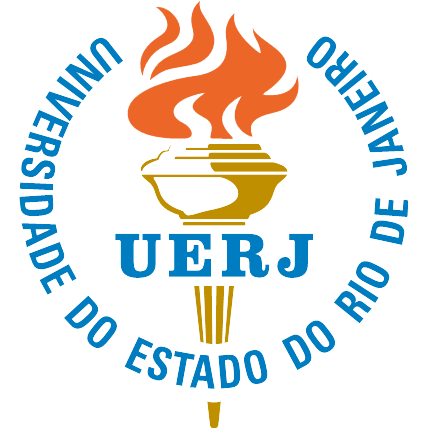Impacto da presencialidade do avaliador em simulação clínica de suporte avançado de vida: ensaio clínico randomizado
DOI:
https://doi.org/10.12957/reuerj.2025.85488Palavras-chave:
Educação em Enfermagem, Parada Cardíaca, Suporte Vital Cardíaco Avançado, Treinamento por Simulação, Simulação de PacienteResumo
Objetivo: analisar o efeito das presencialidades direta e indireta do avaliador nas habilidades de estudantes de enfermagem em um cenário clínico simulado sobre suporte avançado de vida. Método: ensaio clínico randomizado, com 68 estudantes brasileiros, sendo 35 do grupo experimental e 33 do controle. O grupo experimental acessou cenário clínico simulado sem a presença visível do avaliador, enquanto grupo controle contou com a presença visível do avaliador. Análises realizadas por meio de teste t-Student, ANOVA, Mann-Whitney e Shapiro-Wilk. Protocolo de pesquisa aprovado pelo Comitê de Ética. Resultados: a média de acertos no grupo experimental foi de 4,63(±1,61) e, no grupo controle, de 4,37(±1,31), não havendo diferença estatística significativa (p =0,477). Houve melhora nas médias do conhecimento teórico (<0,001). Conclusão: a presença direta ou indireta do avaliador não interferiu no desempenho dos estudantes de enfermagem, no que tange às habilidades práticas desenvolvidas, com aquisição de conhecimento teórico entre o pré-teste, o pós-teste imediato e o pós-teste tardio.
Referências
1. Furtado FN, Carvalho ACC, Gonçalves Junior I, Canesin MF, Timerman S, Gonçalves RM, et al. First evaluation of the Brazilian Advanced Life Support Training (TECA A). Int J Cardiovasc Sci. 2023 [cited 2023 Dec 21]; 36:e20220199. DOI: https://doi.org/10.36660/ijcs.20220199.
2. Rahadian RE, Okada Y, Shahidah N, Hong D, Ng YY, Chia MYC, et al. Machine learning prediction of refractory ventricular fibrillation in out-of-hospital cardiac arrest using features available to EMS. Resusc Plus. 2024 [cited 2024 Mar 21]; 18:100606. DOI: https://doi.org/10.1016/j.resplu.2024.100606.
3. Vancini-Campanharo CR, Vancini RL, Lira CAB, Lopes MCBT, Okuno MFP, Batista REA, et al. One-year follow-up of neurological status of patients after cardiac arrest seen at the emergency room of a teaching hospital. Einstein (São Paulo). 2015 [cited 2024 Jan 17]; 13(2):183–8. DOI: https://doi.org/10.1590/S1679-45082015AO3286.
4. Terra JS, Lazzari DD, Ramos FC, Becker A, Nascimento ERP, Mendes NU. Clinical characteristics of in-hospital cardiopulmonary resuscitations recorded in medical records: a cross-sectional study. Rev. Enferm. UERJ. 2024 [cited 2024 Jun 29]; 32(1):e75859. DOI: https://doi.org/10.12957/reuerj.2024.75859.
5. Nacer DT, Sousa RMC, Miranda AL. Outcomes after Clinical and Traumatic Out-of-Hospital Cardiac Arrest. Arq Bras Cardiol. 2023 [cited 2024 Jan 20]; 120(7):e20220551. DOI: https://doi.org/10.36660/abc.20220551.
6. Imamura S, Miyata M, Tagata K, Yokomine T, Ohmure K, Kawasoe M, et al. Prognostic predictors in patients with cardiopulmonary arrest: a novel equation for evaluating the 30-day mortality. J Cardiol. 2023 [cited 2024 Jan 20]; 82(2):146-52. DOI: https://doi.org/10.1016/j.jjcc.2023.01.006.
7. Bernoche C, Timerman S, Polastri TF, Giannetti NS, Siqueira AWS, Piscopo A, et al. Atualização da Diretriz de Ressuscitação Cardiopulmonar e Cuidados Cardiovasculares de Emergência da Sociedade Brasileira de Cardiologia - 2019. Arq Bras Cardiol. 2019 [cited 2024 Jan 26]; 113(3):449–663. DOI: https://doi.org/10.5935/abc.20190203.
8. Panchal AR, Norton G, Gibbons E, Buehler J, Kurz MC. Low dose- high frequency, case based psychomotor CPR training improves compression fraction for patients with in-hospital cardiac arrest. Resuscitation. 2020 [cited 2024 Jan 26]; 146:26-31. DOI: https://doi.org/10.1016/j.resuscitation.2019.10.034.
9. Stankovic N, Andersen LW, Granfeldt A, Holmberg MJ. Hospital-level variation in outcomes after in-hospital cardiac arrest in Denmark. Acta Anaesthesiol Scand. 2022 [cited 2024 Jan 26]; 66(2):273-81. DOI: https://doi.org/10.1111/aas.14008.
10. Panchal AR, Bartos JA, Cabañas JG, Donnino MW, Drennan IR, Hirsch KG, et al. Adult Basic and Advanced Life Support Writing Group. Circulation. 2020 [cited 2024 Jan 26]; 142(16_suppl_2):S366-S468. DOI: https://doi.org/10.1161/CIR.0000000000000916.
11. Chen Y, Nasrawi D, Massey D, Johnston ANB, Keller K, Kunst E. Final-year nursing students' foundational knowledge and self-assessed confidence in interpreting cardiac arrhythmias: a cross-sectional study. Nurse Educ Today. 2021 [cited 2024 Jan 26]; 97:104699. DOI: https://doi.org/10.1016/j.nedt.2020.104699.
12. Linn AC, Caregnato RCA, Souza EN. Clinical simulation in nursing education in intensive therapy: an integrative review. Rev Bras Enferm. 2019 [cited 2024 Feb 03]; 72(4):1061-70. DOI: http://dx.doi.org/10.1590/0034-7167-2018-0217.
13. Plotzky C, Lindwedel U, Sorber M, Loessl B, König P, Kunze C, et al. Virtual reality simulations in nurse education: a systematic mapping review. Nurse Educ Today. 2021 [cited 2024 Feb 03]; 101:104868. DOI: https://doi.org/10.1016/j.nedt.2021.104868.
14. Horsley TL, Wambach K. Effect of nursing faculty presence on students' anxiety, self-confidence, and clinical performance during a clinical simulation experience. Clin Simul Nurs. 2015 [cited 2024 Feb 03]; 11(1):4-10. DOI: https://doi.org/10.1016/j.ecns.2014.09.012.
15. Dwan K, Li T, Altman DG, Elbourne D. CONSORT 2010 statement: extension to randomised crossover trials. BMJ. 2019 [cited 2024 Feb 03]; 366:l4378. DOI: https://doi.org/10.1136/bmj.l4378.
16. Lucas MG, Nalin GV, Sant’Anna ALGG, Oliveira SA, Machado RC. Validation of content of an instrument for evaluation of training in cardiopulmonary resuscitation. REME - Rev Min Enferm. 2018 [cited 2024 Feb 05]; 22:e-1132. DOI: https://doi.org/10.17533/udea.iee.v40n1e15.
17. Costa YCN, Dias AA, Tony ACC, Silva MPS, Dutra HS, Prado RT, et al. Construction and validity of a simulated scenario-checklist for the assessment and identification of shockable arrhythmias: a methodological study. Texto-Contexto Enferm. 2023 [cited 2024 Feb 05]; 32:e20230015. DOI: https://doi.org/10.1590/1980-265X-TCE-2023-0015en.
18. Requena-Mullor MDM, Alarcón-Rodríguez R, Ventura-Miranda MI, García-González J. Effects of a clinical simulation course about basic life support on undergraduate nursing students' learning. Int J Environ Res Public Health. 2021 [cited 2024 Feb 05]; 18(4):1409. DOI: https://doi.org/10.3390/ijerph18041409.
19. Carbogim FC, Luiz FS, Oliveira LB, Braz PR, Santos KB, Püschel VAA. Effectiveness of a teaching model in a first aid curse: a randomized clinical trial. Texto-Contexto Enferm. 2020 [cited 2024 Feb 07]; 29:e20180362. DOI: https://doi.org/10.1590/1980-265X-TCE-2018-0362.
20. Demirtas A, Basak T, Sahin G, Sonkaya MÇ. The serious game and integrated simulator for cardiopulmonary resuscitation training in nursing students. Simul Gaming. 2022 [cited 2024 Feb 07]; 53(2):97-110. DOI: https://doi.org/10.1177/10468781211073162.
21. Moretti MA, Bento AM, Quilici AP, Martins M, Cardoso LF, Timerman S. Analysis of the intra-hospital attending of ventricular fibrilation/ventricular taquicardia simulated events. Arq Bras Cardiol. 2005 [cited 2024 Feb 07];84(6):449-51. DOI: https://doi.org/10.1590/s0066-782x2005000600003.
22. Rajeswaran L, Cox M, Moeng S, Tsima BM. Assessment of nurses’ cardiopulmonary resuscitation knowledge and skills within three district hospitals in Botswana. Afr J Prm Health Care Fam Med. 2018 [cited 2024 Feb 10]; 10(1):a1633. DOI: https://doi.org/10.4102/phcfm.v10i1.1633.
23. Araujo NR, Araújo RA, Moretti MA, Chagas ACP. Nursing training and retraining on cardiopulmonary resuscitation: a theoretical-practical intervention. Rev esc enferm USP. 2022 [cited 2024 Feb 12]; 56:e20210521. DOI: https://doi.org/10.1590/1980-220X-REEUSP-2021-0521.
24. Riggs M, Franklin R, Saylany L. Associations between cardiopulmonary resuscitation (CPR) knowledge, self-efficacy, training history and willingness to perform CPR and CPR psychomotor skills: a systematic review. Resuscitation. 2019 [cited 2024 Feb 14]; 138:259-72. DOI: https://doi.org/10.1016/j.resuscitation.2019.03.019.
25. Junli A, Isa SNI, Ibrahim FS. Factors of cardiopulmonary resuscitation skills retention among healthcare providers: a scoping review. Nurse Educ Pract. 2023 [cited 2024 Feb 14]; 69:103617. DOI: https://doi.org/10.1016/j.nepr.2023.103617.
26. Madsgaard A, Smith-Strøm H, Hunskår I, Røykenes K. A rollercoaster of emotions: an integrative review of emotions and its impact on health professional students' learning in simulation-based education. Nurs Open. 2022 [cited 2024 Feb 14]; 9(1):108-21. DOI: https://doi.org/10.1002/nop2.1100.
27. Anine M, Kari R, Monica Ø, Hilde SS. Health professional students' self-reported emotions during simulation-based education: An interpretive descriptive study. Nurse Educ Pract. 2022 [cited 2024 Feb 14]; 63:103353. DOI: https://doi.org/10.1016/j.nepr.2022.103353.
28. Ferreira RPN, Guedes HM, Oliveira DWD, Miranda JL. Realistic simulation as a method of teaching in the learning of the health field students. R. Enferm. Cent. O. Min. 2018 [cited 2024 Feb 14]; 8:e2508. DOI: https://doi.org/10.19175/recom.v8i0.2508.
29. McDermott DS, Ludlow J, Horsley E, Meakim C. Healthcare Simulation Standards of Best PracticeTM Prebriefing: Preparation and Briefing. Clin Simul Nurs. 2021 [cited 2024 Feb 14]; 58:9-13 DOI: https://doi.org/10.1016/j.ecns.2021.08.008.
30. Santos ECN, Almeida RGS, Meska MHG, Mazzo A. Simulated patient versus high-fidelity simulator: satisfaction, self-confidence and knowledge among nursing students in Brazil. Cogitare Enferm. 2021 [cited 2024 Jul 16]; 26:e76730. DOI: https://doi.org/10.5380/ce.v26i0.76730.
Downloads
Publicado
Como Citar
Edição
Seção
Licença
Copyright (c) 2025 Marcos Paulo Schlinz e Silva, Ana Carolina Carraro Tony, Yule Caroline Nunes da Costa, André Luiz Silva Alvim, Luciane Ribeiro, Ricardo Bezerra Cavalcante, Angélica da Conceição Oliveira Coelho, Fábio da Costa Carbogim

Este trabalho está licenciado sob uma licença Creative Commons Attribution 4.0 International License.
Ao publicar na Revista Enfermagem UERJ, os autores declaram que o trabalho é de sua exclusiva autoria e assumem, portanto, total responsabilidade pelo seu conteúdo.
Os autores retêm os direitos autorais de seu artigo e concordam em licenciar seu trabalho usando uma Licença Pública Internacional Creative Commons Atribuição (CC BY), aceitando assim os termos e condições desta licença (https://creativecommons.org/licenses/by/4.0/legalcode.en), que permite que o material criado pelo autor pode ser distribuído, copiado e exibido por terceiros. O trabalho original deve ser citado e apresentar um link para o artigo disponível no site da revista em que foi publicado.
Os Direitos Autorais dos artigos publicados na Revista Enfermagem UERJ pertencem ao(s) seu(s) respectivo(s) autor(es), com os direitos de primeira publicação cedidos à Revista Enfermagem UERJ, com o trabalho simultaneamente licenciado sob uma Licença Creative Commons CC BY, a qual permite o compartilhamento do trabalho com reconhecimento da autoria e publicação inicial nesta revista
Os autores concedem à Revista Enfermagem UERJ o direito de primeira publicação, de se identificar como publicadora original do trabalho e concedem à revista uma licença de direitos não exclusivos para utilizar o trabalho das seguintes formas:
- Vender e/ou distribuir o trabalho em cópias impressas e/ou em formato eletrônico;
- Distribuir partes e/ou o trabalho como um todo com o objetivo de promover a revista por meio da internet e outras mídias digitais e impressas;
- Gravar e reproduzir o trabalho em qualquer formato, incluindo mídia digital.
Em consonância com as políticas da revista, a cada artigo publicado será atribuída uma licença Creative Commons Atribuição (CC BY).









